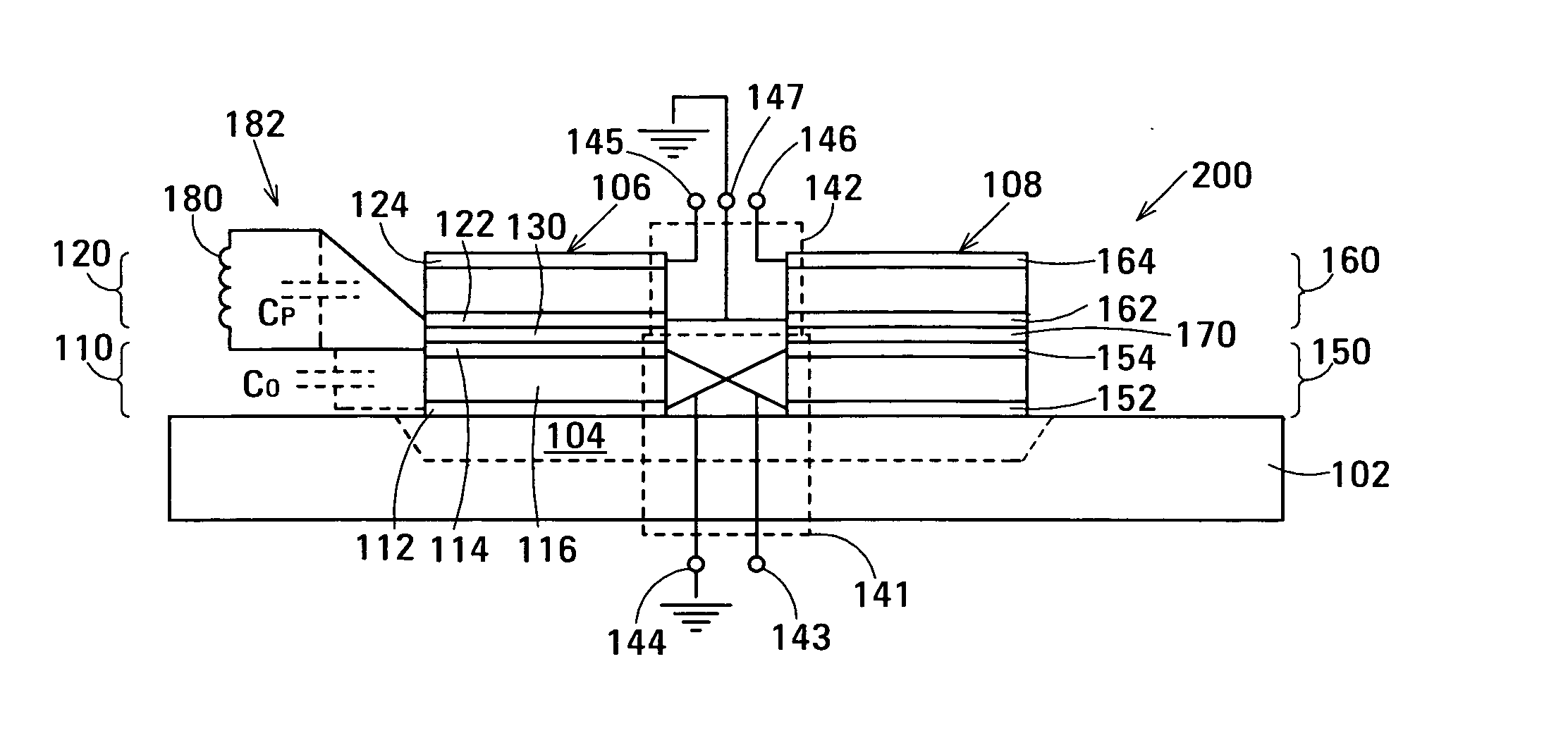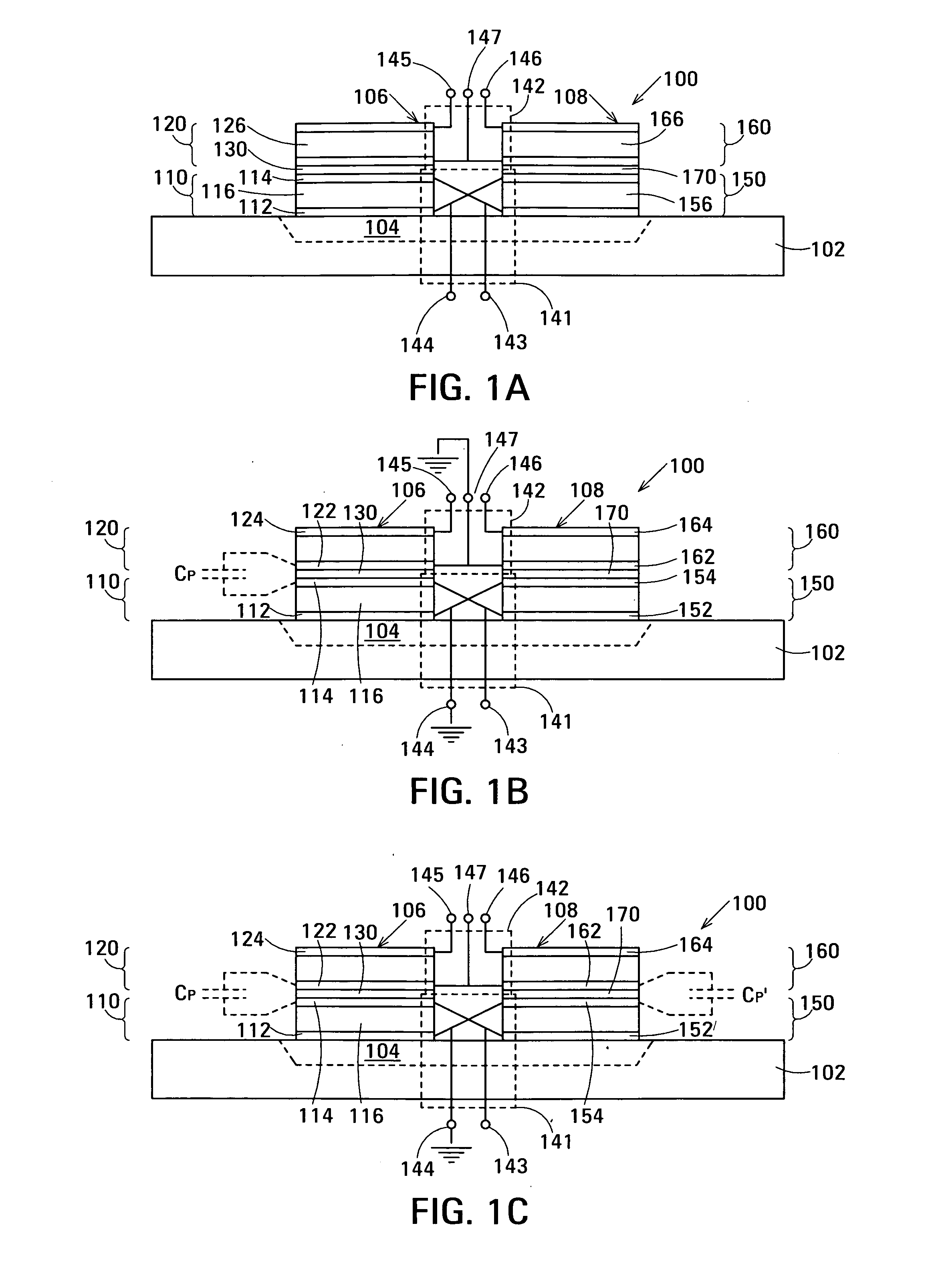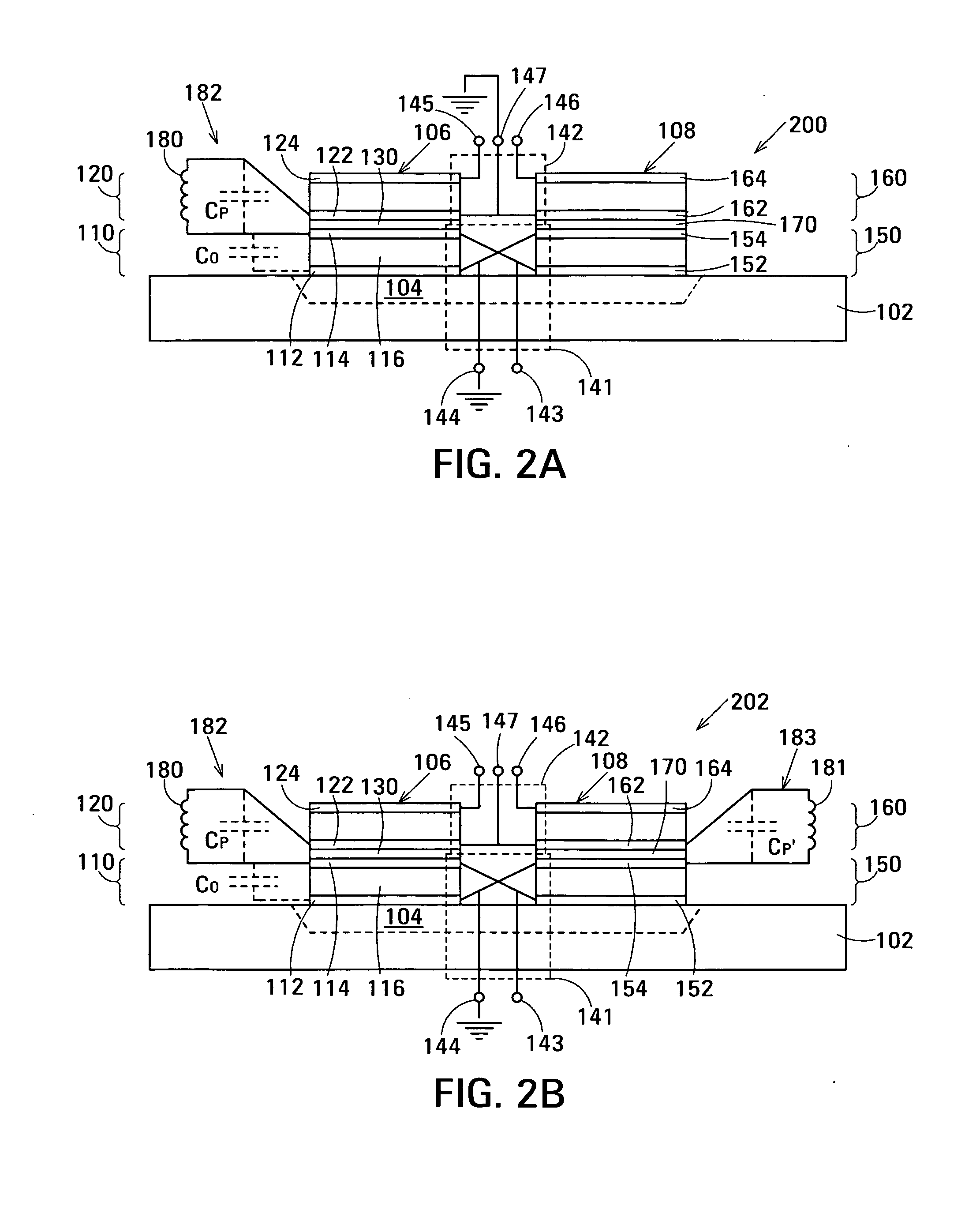Film acoustically-coupled transformer with increased common mode rejection
a technology of acoustically coupled transformers and common mode, which is applied in the direction of impedence networks, electrical equipment, and semiconductor devices, can solve the problems of coil-based transformers becoming impractical, not all transformers have all of these properties, and the autotransformer does not provide electrical isolation, etc., and achieves the effect of increasing the common-mode rejection ratio
- Summary
- Abstract
- Description
- Claims
- Application Information
AI Technical Summary
Benefits of technology
Problems solved by technology
Method used
Image
Examples
embodiment 200
[0039]FIG. 2A is a schematic drawing showing an embodiment 200 of a film acoustically-coupled transformer (FACT) in accordance with the invention. FACT 200 is for use in an application similar to that described above with reference to FIG. 1B in which electrodes 112 and 154 connected to terminal 144 are grounded and electrodes 122 and 162 connected to center tap terminal 147 are also grounded. Elements of FACT 200 that correspond to elements of FACT 100 described above with reference to FIG. 1B are indicated by the same reference numerals and will not be described again here. In FACT 200, an inductor 180 is connected between electrode 114 and electrode 122 on opposite sides of acoustic decoupler 130. This connects inductor 180 in parallel with parasitic capacitor CP. Inductor 180 significantly increases the common-mode rejection ratio of FACT 200 relative to that of FACT 100 by reducing the current flow between electrical circuit 141 and electrical circuit 142. Inductor 180 addition...
embodiment 202
[0041]FIG. 2B is a schematic drawing showing an embodiment 202 of a FACT in accordance with the invention. FACT 202 is for use in an application similar to that described above with reference to FIG. 1C in which electrodes 112 and 124 are grounded and electrical circuit 142 is floating. Elements of FACT 202 that correspond to elements of FACT 100 described above with reference to FIG. 1B and of FACT 200 described above with reference to FIG. 2A are indicated by the same reference numerals and will not be described again here. FACT 202 has an inductor 180 connected between electrode 114 and electrode 122 on opposite sides of acoustic decoupler 130 and an inductor 181 connected between electrode 154 and electrode 162 on opposite sides of acoustic decoupler 170. Inductors 180 and 181 significantly increase the common-mode rejection ratio of FACT 202 relative to that of FACT 100 by reducing the current flow between electrical circuit 141 and electrical circuit 142. Inductor 180 addition...
embodiment 300
[0043] In FACT 200 shown in FIG. 2A, inductor 180 interconnects electrical circuit 141 and electrical circuit 142 at DC. As a result, FACT 200 does not provide electrical isolation between electrical circuit 141 and electrical circuit 142 at DC. FIG. 3A is a schematic drawing showing an embodiment 300 of a FACT in accordance with the invention that additionally provides electrical isolation between electrical circuits 141 and 142 at DC voltages up to the breakdown voltage of an isolating capacitor 184 connected in series with inductor 180. FACT 300 is for use in an application similar to that described above with reference to FIG. 1B in which electrodes 112 and 154 connected to terminal 144 are grounded and electrodes 122 and 162 connected to center tap terminal 147 are also grounded. Elements of the FACT 300 shown in FIG. 3A that correspond to elements of FACT 200 shown in FIG. 2A are indicated using the same reference numerals and will not be described again here.
[0044] In FACT 30...
PUM
| Property | Measurement | Unit |
|---|---|---|
| Mass | aaaaa | aaaaa |
| Thickness | aaaaa | aaaaa |
| Dielectric polarization enthalpy | aaaaa | aaaaa |
Abstract
Description
Claims
Application Information
 Login to View More
Login to View More - R&D
- Intellectual Property
- Life Sciences
- Materials
- Tech Scout
- Unparalleled Data Quality
- Higher Quality Content
- 60% Fewer Hallucinations
Browse by: Latest US Patents, China's latest patents, Technical Efficacy Thesaurus, Application Domain, Technology Topic, Popular Technical Reports.
© 2025 PatSnap. All rights reserved.Legal|Privacy policy|Modern Slavery Act Transparency Statement|Sitemap|About US| Contact US: help@patsnap.com



